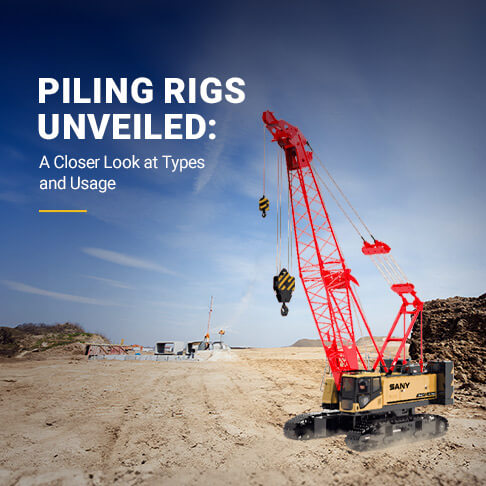Piling Rigs Unveiled: A Closer Look at Types and Usage
Every construction project is essentially a complex puzzle where every piece must align perfectly to ensure stability and resilience. Among these essential components, the piling rig stands out as a key tool in constructing solid deep foundations for various structures. Gaining a comprehensive understanding of the different types of piling rigs and their specific applications is crucial for any construction project since it significantly impacts the overall success of the building process. In this article, we will delve into the various piling techniques in detail, focusing on their mechanisms, applications, and benefits. Piling rigs are specialized construction equipment used to drive piles deep into the soil to provide foundational support for buildings or other structures. The choice of piling method depends on several factors, such as the type of soil, the load-bearing requirements of the structure, environmental restrictions, and available space. Open bore piling is a versatile method suitable for both large and small construction sites. This technique involves drilling a deep, wide hole using a rotating auger, which works like a giant screw. As the auger drills down to the required depth, the soil is excavated. Once the desired depth is reached, steel reinforcement cages are inserted into the hole and filled with concrete to form the pile. This method is especially valuable in urban settings or near existing structures because it generates very little vibration, minimizing the risk of damaging neighboring properties. It is commonly used in constructing basements and foundations where stability and minimal disruption are crucial. CFA piling is celebrated for its low noise and vibration levels, making it ideal for urban environments and areas close to sensitive structures. The process involves drilling into the ground with a continuous flight auger until the required depth is achieved. As the auger is withdrawn, concrete is pumped through the hollow shaft of the auger, filling the space left behind and forming the pile. This method allows for rapid installation and works effectively in soft to medium-hard soil conditions. In construction, retaining walls are vital for managing earth pressures in excavated areas. These structures are crucial in maintaining the integrity of the excavation and preventing soil collapse, especially in projects involving deep foundations or basements. This type of wall is used to create a continuous barrier that holds back soil or water. It consists of closely spaced bored piles that are constructed next to each other. The gaps between the piles can vary depending on soil conditions, making this method flexible and effective in different environments. It is particularly useful for constructing underground structures like car parks or basements in urban areas. Secant pile walls are formed by overlapping "primary" (unreinforced) and "secondary" (reinforced) concrete piles. The interlocking nature of the piles enhances the wall's strength and water tightness, making it suitable for use in areas with challenging ground conditions or high water tables. Secant pile walls are often used in projects requiring robust earth retention, such as deep excavations and tunnels. Mini piling techniques are designed for use in restricted access or low headroom situations. These compact rigs can perform a variety of piling methods, including rotary drilling, jacking, and impact driving. Mini piles are particularly beneficial in urban renovations or additions where traditional piling rigs cannot operate due to space limitations. The appropriate selection of a piling method is critical for ensuring the structural integrity and longevity of a construction project. Each type of piling rig offers distinct advantages that can be utilized in specific scenarios, from densely populated urban environments to sensitive ecological areas. By thoroughly understanding the characteristics and applications of each piling technique, construction professionals can make informed decisions that optimize the foundation's performance and overall project success. If you're looking for a piling rig machine for your project, consider partnering with us. Sany India is a well-established manufacturer of piling rigs in India. We offer a wide range of pile rigs featuring machines with strokes ranging from 3000 mm to 6000 mm. Our pile rig machines can achieve maximum drilling depths of up to 100m/65m (Friction/Interlock) meters. With over 21 years of experience in the construction machinery and equipment industry, we have built a strong network of approximately 260 touchpoints across India. Join us in building a new India! Water Based Cleaning Agent,Cleaning Fluid,Industrial Cleaner,Ethanol Alcohol Cleaner AMER TECHNOLOGY CO.,LTD. , https://www.amerlube.com
Demystifying Piling Rigs
Diverse Types of Piling and Their Applications
1. Open Bore Piling:
2. Continuous Flight Auger (CFA) Piling:
3. Retaining Walls:
4. Contiguous Bored Pile Walls:
5. Secant Bored Pile Walls:
6. Mini Piling and Limited Space Solutions:
Final Thoughts